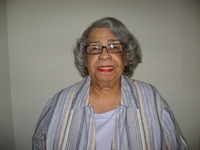 When 23-year-old Claire Soublet arrives in New York City to begin her new life, she has no idea that after only four days a situation will arise forcing her to return to New Orleans.
When 23-year-old Claire Soublet arrives in New York City to begin her new life, she has no idea that after only four days a situation will arise forcing her to return to New Orleans.
Published: June 21st, 2015
When 23-year-old Claire Soublet arrives in New York City to begin her new life, she has no idea that after only four days a situation will arise forcing her to return to New Orleans. Growing up mired in years of hardship and being abandoned by family through death and disinterest, she manages to scratch and claw her way out of that life. And in the process, get a college education. Back in New Orleans and not ready to succumb to her old life, she enlists the help of her high school friend. They devise a plan to, once again, get Claire out of her hometown. With their new-found relationship, they return to New York together.
EXCERPT - Chapter One
The 1878 yellow fever epidemic in New Orleans claimed my mother Cecile when she was
only twenty-five leaving behind four children - my older sister Aurelia was nine, I was five, Philomene was three, and my brother Augustin wasn’t yet two - and if the two babies born between Aurelia and I had lived, there would have been six of us left motherless.
Sanité, my father’s mother, took care of us until she died three years later. My grandmother was a very kind and gentle person. She was a Choctaw Indian who never sat in a chair or slept in a bed. She spent most of her time sitting, squatting, or sleeping on the floor. The only time I saw her standing was when she was cooking, cleaning, or leaving the house to go to the market.
Even after the “Tignon Law” was abolished in 1843, Sanité still wore the madras kerchief to cover her head. She taught our mother how to wrap it to cover her hair and told her how the law came about as Aurelia and I watched and listened. The law was passed in 1786, she told us, and it forced free women of color to cover their heads with the same type of kerchiefs the slave women wore. The Governor was determined to tighten control over the non-Whites in the city to please the White women who felt threatened by the beautiful, free women of color who had relationships with White men.
Before the undertaker came to pick up my grandmother’s body, my father removed the tignon; her waist-length, coal black hair came tumbling out. He wept as he tied a shoestring at the top of her long thick plait. He cut it off, touched it to his lips, then wrapped it with the kerchief in a pillowcase and tucked it away in a drawer. “There,” he said as he pulled her now shoulder-length hair from behind her ears and gently combed through it with his fingers, “you will not be buried with your head covered.” My father threw his body across his mother’s and sobbed without shame. Aurelia, Philomene and I fell on top of him and cried just as hard.
I could not fully understand why my father showed how much he cared about his mother in death when he’d never treated her kindly when she was alive; I was left confused. I’d heard him tell her how ashamed he was of her – of her being Choctaw. He hated having inherited her tan skin and shiny black hair. His blue eyes came from his French father, Etienne Menard.
I think only Aurelia was old enough to appreciate that our grandmother was finally free from the hardship and prejudice she’d had to endure. She told me even though my father was crying because his mother was dead, he was also happy she was finally at peace. I, too, came to understand this many years later when I looked back on it.
My grandfather, a hunter and a trapper, spent most of his time in the swamps and the bayous. He often traded with the Indian tribes who lived where he hunted. He found Sanité among the Choctaw and brought her to New Orleans to live with him. She was already twenty-four and none of the men of her tribe wanted her for a wife. She was shunned and considered taboo by the men and the women because she had been born with a dime-size black mole in the center of her forehead. Only the children and the very old treated her with kindness.
New Orleans laws forbade Etienne to legally marry Sanité, but Father Guillard secretly heard their vows in the rectory at St. Louis Cathedral.
Etienne bought a small house in the Tremé section and had two children with Sanité. When Pauline was thirteen and my father Christophe ten, Etienne disappeared. Sanité and her children didn’t know if he’d been killed or if he’d returned to France without telling them. Without a legal marriage, who could Sanité go to for help? For years they waited for him to come home, but they never heard from him again.
Etienne Menard did two decent things before he vanished. He legally left the house to his children and he taught them, as well as Sanité, to sew. He was a tailor in France before coming to America. He taught them how to make a man’s suit from the collar to the hem of the pant legs. And this skill was their saving grace.
Pauline, who was blond and blue-eyed, became a passablanc. She was tall for her age and looked much older than her fifteen years. It took several weeks of walking around uptown in the business section of the city to find a place that was willing to trust her with piecework she could do at home. Stern Brothers, a men’s store on Dryades Street, though reluctant, gave her a few trial pieces. When she returned the half dozen sets of coat sleeves, Mr. Stern was so impressed with the quality of the sewing that he gave her steady work. Pauline brought the pieces home and Sanité and Christophe helped her sew them together. At first they worked on only suit coats, then suit trousers, and eventually they were making whole suits. They survived more than four years on what they made from the piecework and from what Sanité made at the French Market selling the herbs she grew in her garden.
Goodreads ** Amazon ** iTunes ** Kobo ** IndieBound
Claudette Carrida Jeffrey, a native New Orleanian, is a retired teacher who lives in Northern California. The Color of Life is her second book of four in the Claire Soublet Series. A Brown Paper Bag and A Fine Tooth Comb (2012) begins the coming of age story of Claire Soublet, a young Creole of Color, growing up in 1940s and 50s New Orleans.





4 comments:
I'm intrigued by the beautiful cover.
I agree. The cover is beautiful. I liked the synopsis too. Not my typical genre, but it sounds like an entertaining read with likeable characters.
Beautiful cover. Very good excerpt. Will be on my "to read" list. Thanks.
I'm intrigued by the saga. Generations of a family over years is a good basis for a book :)
Post a Comment